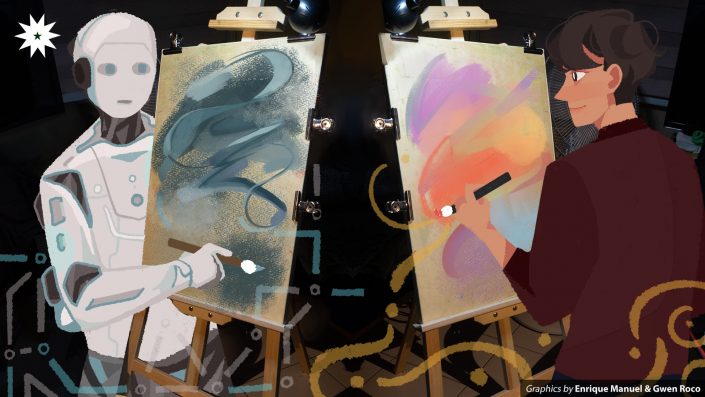How would you feel if you knew that your career was at risk? Not just on an individual basis but even on the careers of your colleagues, friends, or just anyone in the same field of work. It may sound like an exaggeration, and it probably is.
In countries such as the United States, there have been talks of policies tackling automation taking over traditional jobs. However, efficiency is what is ultimately desired, prompting companies and governments to continue investing in automation. I believe artificial intelligence (AI) is in the exact same scenario. The “AI hype train” will probably continue on, as every other week we hear of a new, revolutionary use of AI technology in the arts, in transportation, and in many other fields.
For the longest time, worries of “machines” taking over jobs loomed over industries like trucking and retail. Now, who would have guessed that the hype and potential around AI would be found in the fields of illustrations and the visual arts? This begs the question: how will this affect visual artists like me? And can we embrace AI?

Efficiency in art
Just like with automation, AI is used to further its own potential and to increase efficiency in the field in which it is applied in. In art, it wouldn’t be right to quantify the “beauty” or “creativeness” of some illustrations, as it is very subjective. For instance, while simplistic art is desired by many, abstract art also has a market. And if we were to use beauty as a significant measure, AI could top the charts together with professional artists as it holds the ability to generate remarkable artwork.
Production speed could be a criterion to measure efficiency in art. In general, this creative output is slow, and it can be tedious. Jeremiah Gallo, a 3D artist at NarraSoft Corporation, emphasizes the importance of producing quality art in the industry—something that AI is very much well-equipped to do. At this point, with our current technology, the art industry and companies have begun investing and looking into novel ideas such as AI and 3D artistry.
From a consumer standpoint, the ability to generate quality art with a word, phrase, or sentence is just amazing and efficient. This paves the way for a mass generation of scenes for comics or graphic novels, simple logos and designs for a company, or even just for personal desire. But how do artists feel about this?
Reality of things
The sentiment that AI is ruining 2D art is pervasive in many art communities and forums. In some forums, I’ve seen the topic of AI and any AI-related submissions outright banned. On YouTube, there are a decent amount of videos related to the detrimental effects of AI in the visual arts. Broadly speaking, it seems like there is a divide in the visual arts world between those who embrace AI, those who speak out against it, and perhaps those who are in between.
Gallo, who also started out with 2D illustrations and graphic design, notes that “on the production side of things” an artist is basically like a “soldier”. Drawing, painting, digital artistry, and many other forms of visual arts can be very time-consuming; there is value in the process. But now, with the tools of AI, producing quality artwork and assets at a faster rate is easier than ever. Not all consumers really care about the process—I would say the majority do not. AI art is undoubtedly an avenue for generating high-quality artwork without the need for time or even money.
Spirit of the artist
“AI art is soulless” is another common sentiment I’ve seen from its critics. It can look exceptionally beautiful and can create realistic textures, fantastical landscapes, and characters. However, at the end of the day, it was generated by AI. There was no artist who sketched a design or experimented with different styles; the “experience” of creating the artwork becomes nonexistent.
In the debate of whether or not AI art is “art,” Gallo believes that it is, because the result is still an expression. However, he also notes that it could be a “mockery” of how art is made; anyone can use input words or phrases to generate artwork—and this is a completely different process from the art we are familiar with.
In the end, though, I believe that it is human works that are at the heart of AI artworks—for now at least. After all, human artworks are fed into the network to train these AI. Gallo echoes this sentiment saying that “I don’t think AI will evolve without human examples.”
A pivot point
As with all other art forms, the world of visual arts also evolves. From traditional charcoal, oil, and acrylic paintings, we have moved toward digital art with newfound quality, featuring 3D technology with the ability to make features with great integration with animation. Now, AI technology is here bearing assets that we are still yet to discover.
The question remains if artists should fight this wave of AI or adapt and use it to their advantage. “You’re gonna be forced to become creative,” says Gallo regarding this wave of AI, expressing his focus on “becoming better as a human [as an artist]” rather than fixating on the AI.
With the novelty of AI, it is hard to see where the visual arts will end up in the coming years. New developments are still being done in AI technology every day. In regard to the future of AI art, all I can say is that it is a terrifying and exciting thought.
